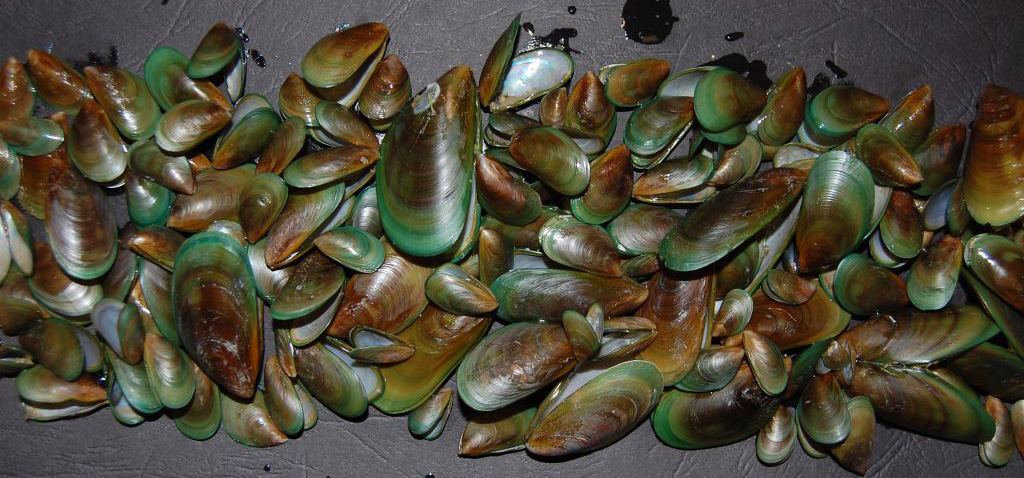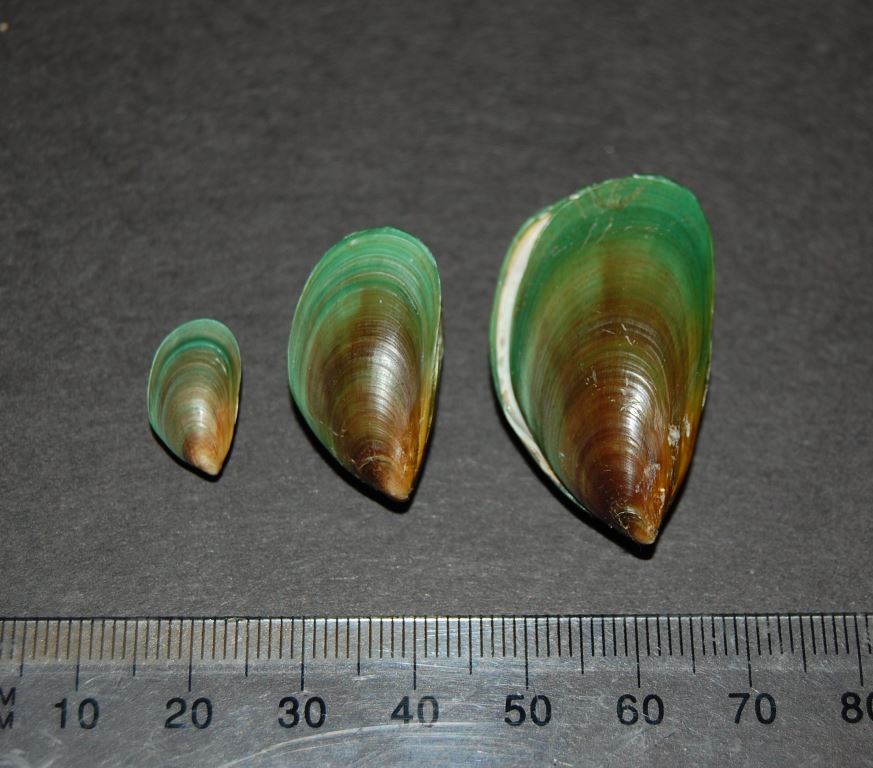Aquatic pests: marine and freshwater
Asian green mussel
The Asian green mussel is a major marine pest that poses a threat to Northern Territory (NT) waters.
It generally spreads on the hulls of ships, in ballast water and in the internal seawater plumbing of vessels.
The mussel can heavily foul and damage boats, port areas, navigation buoys, channel markers and marine farm operations.
It is also believed to have caused shellfish poisoning in humans.
If you find the Asian green mussel in the NT you must report it. Read how to report aquatic pests.
What it looks like
Size
Large, often growing to 100mm in length, and occasionally reaching 165mm.
Colour
They can be vivid green to dark brownish-green near the outer edge, and olive-green near the attachment point.
Juveniles are a bright, vivid green, while the adults tend to retain the green colour along the growing edge only, developing an olive or brown colour nearer to the attachment point.
Their interior is shiny and pale bluish green.
Shell
It has a smooth surface with visible concentric growth rings. The shell tapers to a sharp, down-turned beak.
The beak has interlocking teeth: one inside the right valve and two inside the left.
Where it lives
It is found from the mid-intertidal zones to subtidal areas at temperatures between 11 degrees Celsius and 32 degrees Celsius.
It grows densely, up to 35,000 mussels per square metre, on structures including vessels, wharves, aquaculture equipment, buoys and other hard surfaces.
It can be difficult to detect as it can be overgrown by other marine organisms.
History of Asian green mussel
It is native to tropical Asia and has been introduced in Florida and the Caribbean Sea.
It was detected in Trinity Inlet in Cairns, Queensland, in 2001 and 2013, but did not get established.
Australia has no known populations of Asian green mussels.
Print all pages in this section
Give feedback about this page.
Share this page:
URL copied!

